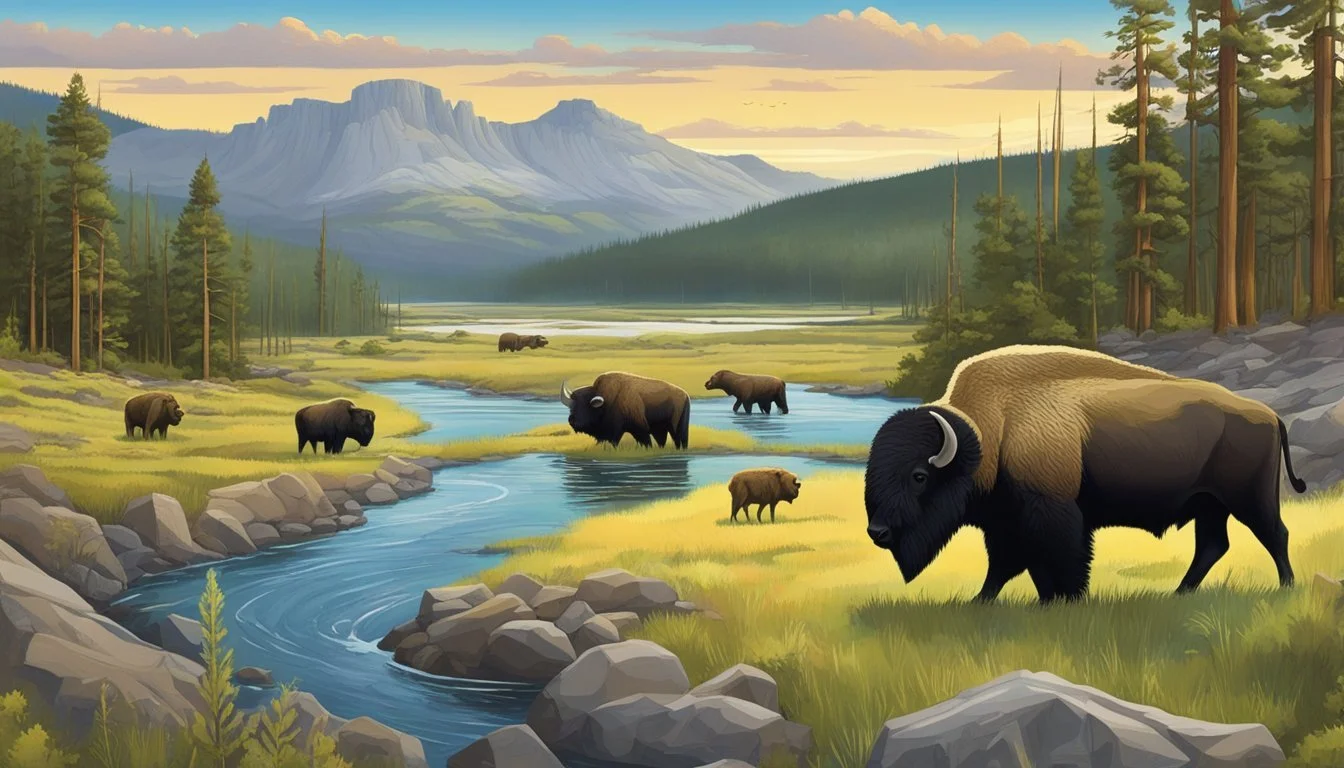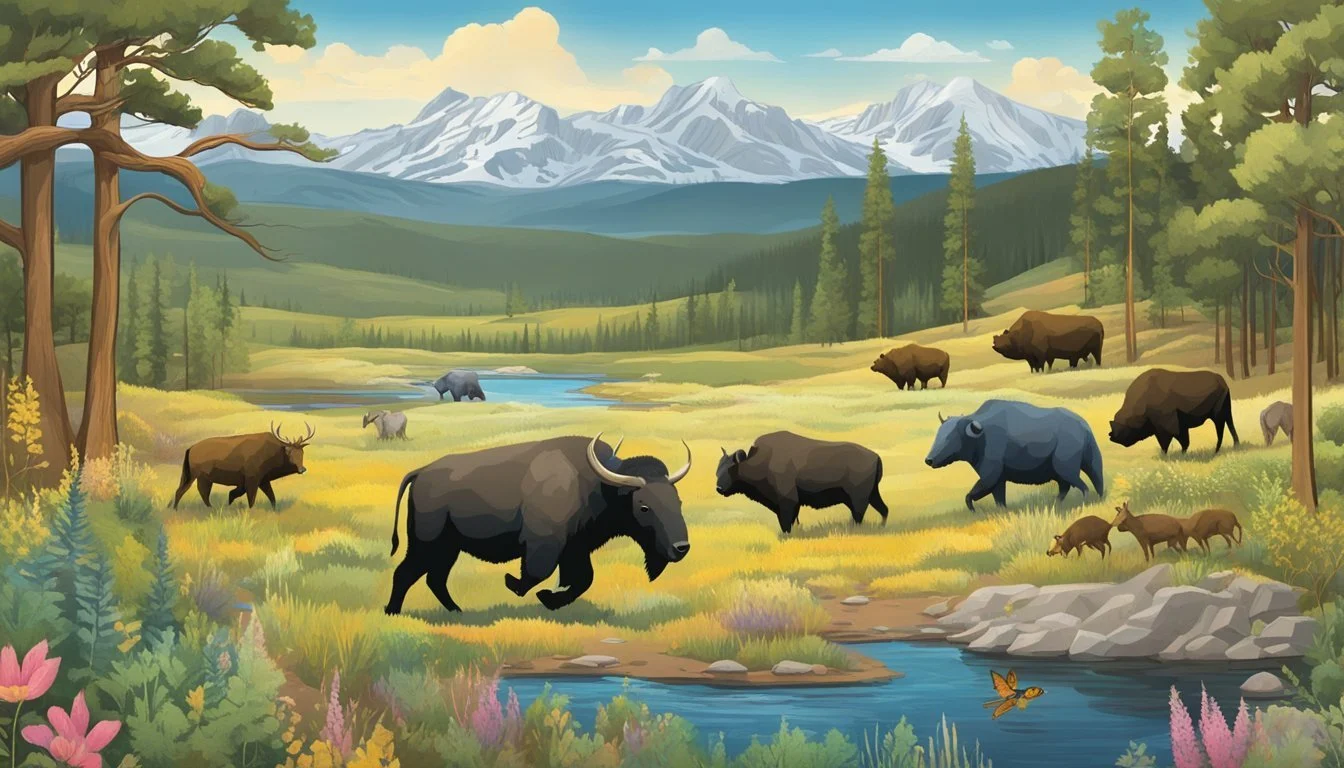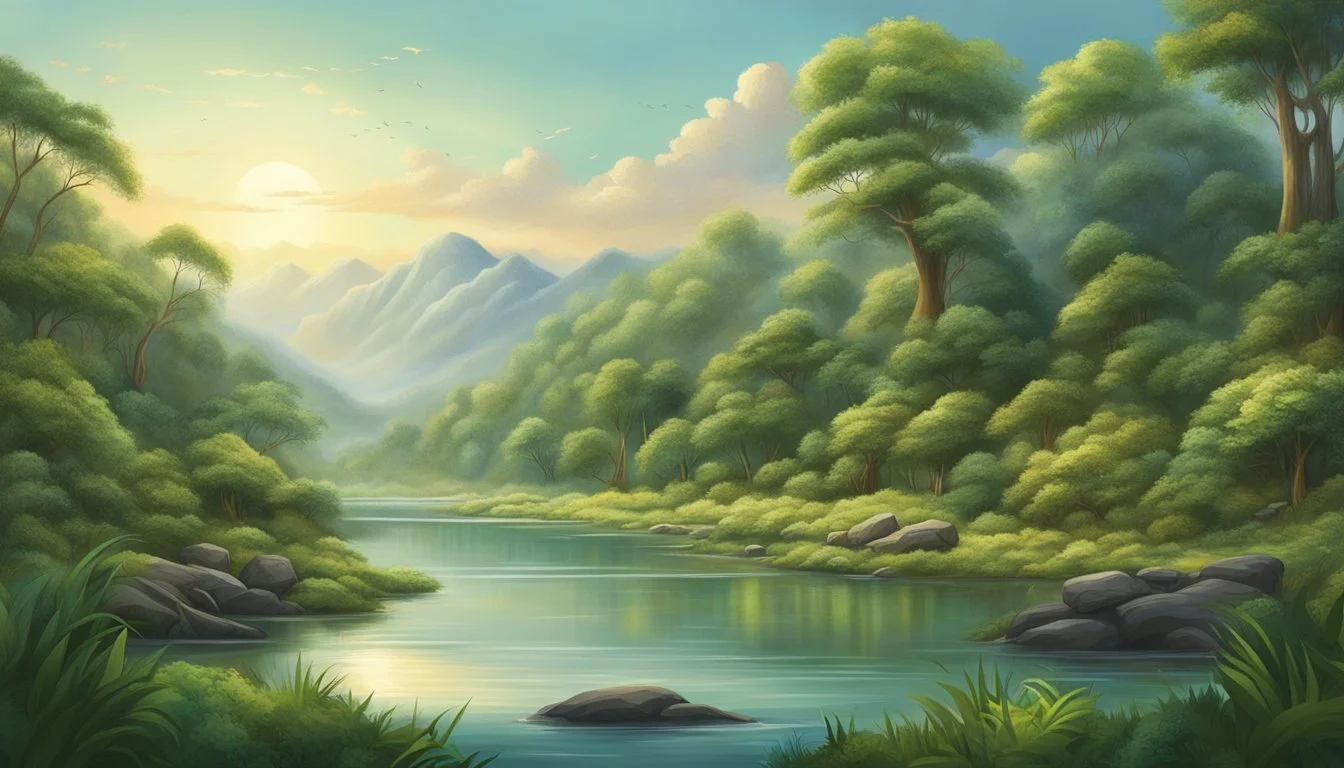Environmental Themes Woven Throughout Yellowstone's Narrative
Nature's Role in Shaping the Series
The popular television series "Yellowstone" captivates audiences with its gripping family drama and power struggles set against the backdrop of Montana's rugged landscape. While the show primarily focuses on the Dutton family's efforts to maintain control of their ranch, it subtly weaves environmental themes throughout its narrative.
"Yellowstone" addresses several environmental issues, including land conservation, wildlife management, and the clash between traditional ranching practices and modern ecological concerns. These themes serve as a backdrop to the main plot, adding depth and relevance to the story while reflecting real-world challenges faced by ranchers and conservationists alike.
The show's portrayal of environmental conflicts resonates with viewers, highlighting the delicate balance between human interests and nature preservation. By incorporating these themes, "Yellowstone" not only entertains but also raises awareness about the complex environmental issues facing the American West today.
The Geographical Marvel of Yellowstone
Yellowstone National Park stands as a testament to nature's raw power and beauty. This iconic region encompasses a diverse landscape shaped by geological forces over millions of years.
At the heart of Yellowstone lies a massive volcanic caldera, measuring approximately 30 miles by 45 miles. This geological feature drives the park's renowned geothermal activity.
The park boasts over 10,000 hydrothermal features, including:
Geysers (including Old Faithful)
Hot springs
Mud pots
Fumaroles
These features create a unique and ever-changing landscape, with vibrant colors and steaming vents scattered throughout the park.
Yellowstone's geography also includes dramatic canyons, pristine lakes, and rushing rivers. The Grand Canyon of the Yellowstone, carved by the Yellowstone River, showcases stunning rock formations and waterfalls.
The park's varied elevations, ranging from 5,282 to 11,358 feet above sea level, contribute to its diverse ecosystems. These include:
Subalpine forests
Alpine meadows
Sagebrush steppe
This geographical diversity supports a rich array of wildlife, from grizzly bears and wolves to bison and elk. Yellowstone's unique combination of geological wonders and ecological richness makes it a truly remarkable site.
Ecological Significance and Processes
Yellowstone's ecological processes and biodiversity form the backbone of its natural heritage. The park's intricate web of life showcases the delicate balance between predators, prey, and their environment.
Biological Ecosystems and Apex Predators
Yellowstone's ecosystems thrive on the interactions between diverse species. Wolves, reintroduced in 1995, play a crucial role as apex predators. Their presence influences elk populations, altering grazing patterns and vegetation growth. This relationship exemplifies the complex interdependencies within the park.
Grizzly bears and mountain lions also contribute to the ecosystem's balance. These predators help regulate prey populations, ensuring a healthy distribution of wildlife across the landscape. Their hunting behaviors shape animal movements and habitat use throughout the park.
The Trophic Cascade Phenomenon
Trophic cascades in Yellowstone demonstrate the far-reaching impacts of predator-prey relationships. The reintroduction of wolves triggered a series of ecological changes. As wolf populations grew, elk behavior shifted, reducing overgrazing in certain areas.
This change allowed for the regeneration of aspen and willow trees along riverbanks. The resurgence of these plant species created new habitats for beavers, whose dams further altered stream ecosystems. Birds, fish, and insects benefited from these transformations, highlighting the interconnectedness of Yellowstone's flora and fauna.
Native Species and Biodiversity
Yellowstone's biodiversity encompasses a wide array of native species. The park hosts over 60 mammal species, including bison, moose, and bighorn sheep. Its diverse landscapes support over 300 bird species and numerous fish, reptiles, and amphibians.
Plant life in Yellowstone is equally varied, with over 1,000 native plant species. These range from hardy alpine flowers to towering lodgepole pines. The park's geothermal features harbor unique microorganisms, some of which have led to important scientific discoveries.
Preserving this biodiversity is crucial for maintaining Yellowstone's ecological integrity. Park managers work to protect native species while addressing challenges posed by invasive organisms and climate change.
Human Impact and Land Use
Yellowstone's narrative explores the complex interplay between human activities and the natural landscape. Land ownership, development pressures, and tourism all shape the park's environment and surrounding areas.
Historical and Contemporary Land Ownership
Native American tribes inhabited the Yellowstone region for thousands of years before European settlers arrived. The U.S. government acquired the land through treaties and forcible removal of indigenous peoples. In 1872, Yellowstone became the world's first national park.
Today, the National Park Service manages Yellowstone's 2.2 million acres. Surrounding areas include private ranches, national forests, and other public lands. This patchwork of ownership creates tensions between different land use priorities.
Ranchers struggle to maintain their way of life as land values rise. Some sell to developers or wealthy outsiders. Others seek conservation easements to preserve open spaces.
Land Development Versus Conservation
Yellowstone faces growing development pressures on its borders. New homes and businesses fragment wildlife habitat and migration routes. Light pollution from nearby towns affects the park's dark skies.
Conservation groups work to protect critical areas through land purchases and easements. They aim to create buffer zones and wildlife corridors around the park.
Within Yellowstone, officials balance visitor access with ecosystem protection. They limit road construction and carefully site visitor facilities to minimize impacts.
Debates continue over allowing activities like snowmobiling that some see as incompatible with conservation goals.
The Effects of Tourism and Recreation
Yellowstone draws over 4 million annual visitors, bringing economic benefits but also strains on park resources. Popular sites suffer from overcrowding, trail erosion, and wildlife disturbance.
Park managers implement timed entry permits and shuttle systems at some locations to reduce congestion and parking problems. They also educate visitors on responsible recreation practices.
Increased visitation leads to more human-wildlife conflicts. Bears and other animals may become habituated to human food, creating safety risks.
Tourism drives regional development, with new lodging and services appearing in gateway communities. This growth brings jobs but also raises concerns about "loving the park to death."
Yellowstone's Management and Future
Yellowstone National Park faces complex challenges in balancing conservation, visitor experience, and ecological integrity. The National Park Service employs integrated management approaches to address these multifaceted issues.
National Park Service and Integrated Management
The National Park Service (NPS) oversees Yellowstone's day-to-day operations and long-term planning. They work to preserve the park's natural and cultural resources while providing visitor access and education.
NPS collaborates with scientists, local communities, and other stakeholders to make informed decisions. This integrated approach helps address interconnected issues like wildlife management, geothermal feature protection, and visitor impact mitigation.
The park's management plan emphasizes adaptive strategies to respond to changing environmental conditions and emerging threats. This flexibility allows for adjustments based on new scientific data and evolving conservation practices.
Wildlife Disease Control and Management
Yellowstone's wildlife populations face various health challenges, including diseases that can spread between species and to domestic animals. Brucellosis in bison has been a long-standing concern.
Park managers work to control disease spread through monitoring, vaccination programs, and strategic herd management. They collaborate with state wildlife agencies to develop comprehensive approaches to wildlife health.
Bison management involves complex decisions balancing conservation goals with concerns about disease transmission to cattle outside the park. Strategies include controlled culling, quarantine programs, and expanding bison range.
Conservation Efforts and Ecological Restoration
Yellowstone's conservation efforts focus on preserving native species and ecosystems. Managers work to protect endangered species, restore degraded habitats, and maintain ecological balance.
Ecological restoration projects aim to reverse past human impacts. These include reintroducing native plant species, removing invasive organisms, and rehabilitating disturbed areas.
Climate change poses new challenges for park ecosystems. Managers are developing strategies to enhance resilience, such as protecting critical habitats and corridors for species migration.
Partnerships with environmental groups and researchers support these efforts. They provide additional resources, expertise, and public engagement to further Yellowstone's conservation mission.
Challenges Facing Yellowstone's Ecosystem
Yellowstone's ecosystem grapples with several pressing issues that threaten its delicate balance. These challenges stem from both natural and human-induced factors, requiring careful management and conservation efforts.
Threats from Invasive Species and Population Decline
Non-native plants, fish, and insects pose significant risks to Yellowstone's native species. These invasive organisms often outcompete local flora and fauna, disrupting natural food chains and altering habitats. For example, lake trout introduced to Yellowstone Lake have decimated native cutthroat trout populations.
Certain native species face population declines due to various factors. The park's iconic bison herds contend with limited grazing areas and conflicts with nearby ranchers. Grizzly bears, though recovering, still face challenges from habitat fragmentation and human encounters.
Threatened species like the Canada lynx and wolverine struggle with shrinking habitats and climate-related changes to their ecosystems. Park managers employ various strategies to combat these issues, including invasive species removal and habitat restoration projects.
Climate Change and Its Consequences
Rising temperatures in the Greater Yellowstone Ecosystem are altering the park's natural rhythms. Snowpack levels have decreased, leading to earlier spring runoffs and drier summers. This shift affects water availability for plants, animals, and the park's famous geothermal features.
Warmer conditions have led to more frequent and intense wildfires, transforming large swaths of forest. While fire is a natural part of the ecosystem, increased frequency can hinder forest regeneration and impact wildlife habitats.
Climate change also influences the timing of seasonal events, such as plant flowering and animal migrations. These shifts can create mismatches between species and their food sources, potentially disrupting entire food webs.
Resource Extraction and Environmental Conflict
The areas surrounding Yellowstone face pressure from various industries seeking to extract natural resources. Oil and gas development, including fracking operations, threaten to fragment habitats and pollute water sources vital to the ecosystem.
Mining activities near park boundaries raise concerns about water quality and wildlife corridor disruption. Proposed mines have sparked debates between economic interests and conservation efforts.
Increased tourism and development in gateway communities strain local resources and create potential conflicts with wildlife. Balancing the economic benefits of tourism with ecosystem preservation remains an ongoing challenge for park managers and local authorities.
Human-wildlife conflicts, particularly involving large predators like wolves and grizzlies, continue to be a contentious issue. Finding solutions that protect both human interests and wildlife populations requires ongoing dialogue and adaptive management strategies.
Social and Economic Dynamics
Yellowstone's narrative explores complex social and economic tensions in the American West. The show highlights conflicts between different groups and interests, revealing deeper cultural and economic forces at play.
Role of Environmentalists and Ranchers
Environmentalists and ranchers often clash in Yellowstone's storylines. Conservationists push for protecting natural habitats and wildlife, while ranchers fight to maintain their livelihoods and traditional ways of life.
This conflict reflects real-world debates over land use and resource management in the West. The show portrays ranchers defending their private property rights against perceived government overreach and environmental regulations.
Yellowstone doesn't take sides, instead showing the nuanced perspectives of both groups. It illustrates how deeply held values and economic realities fuel these ongoing disputes.
Cultural Impact and the Sacred Roots of Yellowstone
Yellowstone explores the area's rich cultural heritage, especially its significance to Native American tribes. The park and surrounding lands hold deep spiritual meaning for indigenous peoples.
The show touches on how development and tourism impact sacred sites. It highlights efforts to preserve Native traditions and protect culturally important areas from exploitation.
This storyline reflects broader social changes in the American West. There's growing recognition of indigenous rights and the need to respect sacred lands. Yellowstone portrays the tension between honoring this heritage and modern pressures for development.
Economic Factors: Tourism Vs. Resource Exploitation
Tourism and resource extraction form competing economic forces in Yellowstone's world. The show depicts the park as a major draw for visitors, fueling local economies through hospitality and recreation.
At the same time, it shows pressure to develop natural resources like oil, gas, and minerals. This creates conflict between those who want to preserve the area's natural amenities and those seeking economic opportunities through resource exploitation.
The narrative explores how land development impacts both the environment and local communities. It raises questions about sustainable tourism and responsible resource management in sensitive ecosystems.
Yellowstone in Literature and Research
Yellowstone National Park has captivated authors and scientists alike, inspiring influential works that explore its ecological and cultural significance. These writings and studies have shaped public perception and conservation efforts.
Key Works: 'Battle for Yellowstone' by Justin Farrell
Justin Farrell's "Battle for Yellowstone" examines the complex social dynamics surrounding the park. The book delves into the moral and cultural conflicts that have arisen in the Greater Yellowstone Ecosystem.
Farrell analyzes how different groups, including environmentalists, ranchers, and government agencies, view the park's purpose and management. He highlights the tensions between conservation efforts and economic interests.
The author's research reveals how deeply held beliefs about nature and society influence policy decisions. This work provides valuable insights into the challenges of balancing ecological preservation with human needs in protected areas.
Scientific Evidence Supporting Conservation
Scientific research in Yellowstone has been crucial in guiding conservation strategies. Studies on the park's wildlife, geothermal features, and ecosystems have provided evidence for the importance of preserving this unique landscape.
Research on wolf reintroduction has demonstrated the concept of trophic cascades, showing how apex predators influence entire ecosystems. This work has highlighted the interconnectedness of species within the Greater Yellowstone Ecosystem.
Geologists and microbiologists have studied Yellowstone's hot springs, uncovering extremophile organisms that thrive in harsh conditions. These discoveries have expanded our understanding of life's resilience and potential applications in biotechnology.
Long-term ecological studies have tracked changes in plant and animal populations, providing data on climate change impacts. This research informs adaptive management strategies, helping to ensure the park's long-term ecological resilience.






